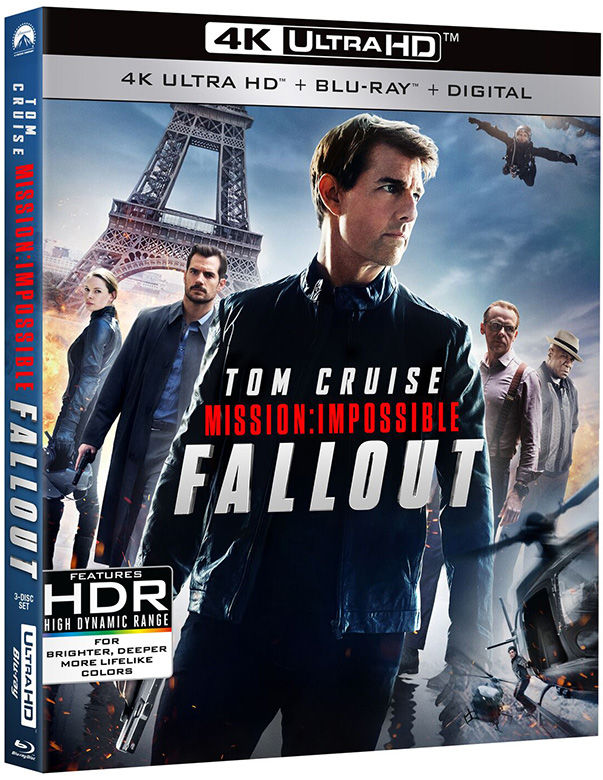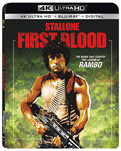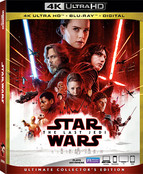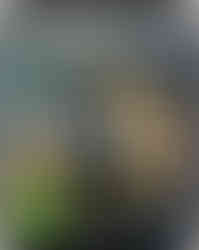Top 15 – 4K Ultra HD’s of 2018
- High-Def Watch Staff

- Dec 31, 2018
- 13 min read
Updated: Mar 10, 2023
THE LIST of movies and TV shows is the very best in 4K viewing from disc or streaming. The criteria required the original source to be mastered in 4K and nothing less.
No upconversion from 2K to 4K on this list.

Oskar Schindler (Liam Neeson) says, "I didn't do enough...I could have got more out." The German businessman masquerading as a member of the Nazi Party, operated factories near Krakow, Poland, and his hometown Zwittau-Brinnlitz, Czechoslovakia, saving more than 1,100 Jews from Nazi death camps by purchasing them through a list of “needed workers.” (4K frame shot courtesy of Universal Studios Home Entertainment).

No. 1 – “SCHINDLER’S LIST: 25th ANNIVERSARY EDITION”
4K Ultra HD, 1993, R for profanity, some sexuality and actuality violence (Disc & Streaming)
“This is a story of courage, and of hope that the world needs now more than ever. I invite you to experience this film so that its message is never forgotten.” ― Director Steven Spielberg
The original black and white camera negative (1.85:1 aspect ratio) was meticulously remastered in 4K, supervised by Spielberg for its theatrical and Ultra HD, with HDR10 and Dolby Vision, release for home viewing.
The HDR gray-scale is much wider and bolder than any previous edition available for theaters or homes. The blacks are far deeper and more subtle – especially in the handheld camera work from Oscar-winning Polish cinematographer Janusz Kaminski, as the Nazis make a final nighttime assault on the Krakow ghetto March 13, 1943. There are no lost details as bullets are sprayed throughout the darkness and super-bright highlights.
The additional resolution is noticeably evident through the natural film grain. Clarity is sharper in the scene where a distant train full of women and children is accidentally routed toward Auschwitz against the snow-covered Polish countryside. Also in the increased definition from the sea of faces as Schindler gives his last goodbyes to his workers after Germany’s surrender to the Allied forces.

Ryan Gosling is the stone-faced blade runner Agent KD6.3-7. (4K frame shot courtesy of Warner Bros. Home Entertainment)

No. 2 – “BLADE RUNNER 2049”
4K Ultra HD, 2017, R for some violence, some sexuality, nudity and profanity (Disc & Streaming)
DESPITE misgivings, 50-year-old French Canadian Villeneuve decided to helm “Blade Runner 2049.” The results delivered a collaborative vision of the future between him and cinematographer Roger Deakins (“Sicario” “Prisoners,” “Skyfall”).
Every scene and frame has been masterfully conceived in 4K resolution, from the editing process to the FX rendering, extracted from the original 3.4K digital camera files.
Visuals are extraordinarily life-like from close-ups to wide shots. For example, Dr. Ana Stelline (Carla Juri), a memory designer, has created a lush holographic forest of vividly green trees and plants for herself; it shocks the eye compared to the ruined Earth of gray-blues, greens, and deep-deep blacks. A reddish/orange radioactive haze covers the abandoned metropolis of Las Vegas as Agent K searches for Deckard. Clarity and detail are unparalleled throughout.

The mysterious Spaniard (Russell Crowe) leads his men to a surprising victory in Rome's Coliseum. In the history re-enactment, his side was supposed to lose. (4K frame shot Courtesy of Paramount/Universal Studios Home Entertainment)

No. 3 – “GLADIATOR”
4K Ultra HD, 2000, R for intense, graphic combat (Disc & Streaming)
RIDLEY SCOTT’S “Gladiator,”a winner of five Academy Awards including Best Picture and Best Actor, is a perfect example of how a 4K master (2.39:1 aspect ratio) provides a terrific home viewing experience. Remastered from the original 35mm camera negative and enhanced with High Dynamic Range (HDR10 & Dolby Vision) makes a huge difference.
The new visuals are superior to the earlier Blu-ray, which had been plagued by edge enhancement and digital noise reduction. The 4K disc also includes the Theatrical cut, (Scott's preferred version) and the Unrated: Extended Edition with 17 additional minutes seamlessly inserted throughout.
The 4K master has a darker palette, creating deeper black levels without losing fine detail in the shadows. Colors are also richer and fuller quickly apparent in the opening battle between Germanic tribes and Roman troops. Expansive reds, oranges and brighter highlights highlight the darkened landscape with fiery arrows and firebombs.
Wide shots receive the maximum benefit from foreground to background, and close-ups provide refined detail in Janty Yates’ Oscar-winning costumes. The film grain is pronounced as it should be – slightly larger from the Super 35 film source.

Capt. John Miller (Tom Hanks) and his squad prepare to assault a German pillbox at Omaha Beach during D-Day June 6, 1944. (4K frame shot courtesy of Paramount Pictures)

No. 4 – “SAVING PRIVATE RYAN: 20th ANNIVERSARY EDITION”
4K Ultra HD, 1998, R for intense, prolonged, realistically graphic sequences of war violence, and for language (Disc & Streaming)
IT'S DISTURBING. It's powerful. It's touching. Steven Spielberg's brutal D-Day masterpiece is the ultimate 4K home theater experience.
Newsreel imagery by Oscar winner Janusz Kaminski is impeccable, especially when the camera moves toward the eyes of Capt. John Miller (Tom Hanks), giving a glimpse into his soul. Paramount kept every single ounce of the gritty film grain for superb sharpness and depth sourced from the original 35mm camera negative and mastered in 4K.
Oddly, the aspect ratio has changed from 1.85:1 to 1.78:1, which gives a little vertical depth with the picture.
The HDR toning expands the visual depth with a much deeper black level, while the highlights are brighter and controlled for a true lifelike picture - especially with natural facial toning. Spielberg purposely desaturated the colors during the combat scenes, while the 4K picture still extracts a richer color palette when needed for environmental landscapes.

Director Stanley Kubrick spent four years developing and filming "2001: A Space Odyssey." (4K frame shot courtesy of Warner Bros. Home Entertainment)

No. 5 – “2001: A SPACE ODYSSEY – 50th ANNIVERSARY EDITION”
4K Ultra HD, 1968; G for everyone (Disc & Streaming)
FOR HALF a century, Stanley Kubrick’s “2001: A Space Odyssey” has been hailed as one of cinema’s greatest – with its mind-blowing visuals of a spacecraft dancing in the starry void.
The 65mm camera negative (2.20:1 aspect ratio) was scanned in 8K using the industry’s best color correction software to match the hues and characteristics of film stock, while technicians referenced the 1991 answer print and a new 70mm check print to mimic Kubrick’s 1968 theatrical release. Warner Bros. handled the HDR10, Dolby Vision and color timing with director Christopher Nolan and his cinematographer Hoyte van Hoytema’s all-important input.
The 4K Ultra HD is far superior to previous home releases, which were based on a 2K scan from a 35mm optical reduction of the 65mm negative. The expanded sharpness and clarity is evident from the opening frames of “The Dawn of Man” sequence, mostly filmed in Namibia, southwest Africa. The larger the screen you have at home the bigger the difference you’ll observe.
You’ll also see a light washing of natural film grain, which is more controlled than traditional 35mm film stock. Plus, the special effects optical shots are still breathtaking, without losing detail — a common problem with older films. The HDR highlights and shadows are tremendous, from the brightest highlights to the deepest blacks, without losing detail in the shadows of deep space. And the color preservation is rich and vivid, evident from the kaleidoscope portal of colors and by HAL 9000’s ominous red eye, never looking so sinister.

The Wachowskis painted the Matrix world in a greenish hue as hacker Neo (Keanu Reeves) sleeps near his computer screen. (4K frame shot courtesy of Warner Bros. Home Entertainment)

No. 6 – “THE MATRIX”
4K Ultra HD, 1999, R for sci-fi violence and brief profanity (Disc & Streaming)
WARNER BROS. gave the four-Oscar winner (Film Editing, Sound, Sound Effects, and Visual Effects) a complete high-tech facelift for its 20th Anniversary release. The original camera negative (2.39:1 aspect ratio) captured on the Super 35 format, was pulled from the vaults and scanned in 4K. It’s the first remastering in 15 years. HDR/Dolby Vision contrast and color toning was supervised by director of photography/cinematographer Bill Pope.
The groundbreaking Visual FX are still in their original 2K rendering, but hold up well against higher resolution footage. The famous three-minute lobby shootout with Neo and Trinity was filmed without CGI and took 10 days to film.
Natural film grain is much more apparent – always a little larger with Super 35 – while toning provides a much deeper black level without losing detail in shadowed scenes. The color gamut, with its dominating Matrix green and the frosty blue for the real world, are accurate and controlled – giving the hyper-kinetic thriller new life.
The Ultra HD resolution magnifies clarity within numerous wide shots filmed by the Wachowskis and Pope. They’re nicely intercut, with super-tight close-ups. The wide and tight shots are similar to the editing style used by Sergio Leone in his Spaghetti Westerns. Close-ups are detailed and textured from facial markings to costumes.

Henry Cavill as August Walker/John Lark, a CIA assassin and double agent tries to keep Ethan Hunt (Tom Cruise) from defusing the nuclear detonator for two five-megaton bombs. (4K frame shot courtesy of Paramount Home Media Distribution)

No. 7 – “MISSION: IMPOSSIBLE – FALLOUT”
4K Ultra HD, 2018, PG-13 for violence and intense sequences of action and brief strong profanity (Disc & Streaming)
DIRECTOR Christopher McQuarrie and British cinematographer Rob Hardy (“Annihilation,” “Ex Machina”) decided to use the lightweight 8K Panavision DXL cameras for two breathtaking IMAX format sequences. The first sequence is the HALO jump from 25,000 feet as the 8K cameras (large-screen aspect ratio of 1.90:1) follow Ethan Hunt from the clouds to the rooftops of Paris. (Tom Cruise made over 90 jumps.)
The helicopter action sequence was filmed for eight weeks using the 8K cameras in New Zealand with Cruise at the controls, soaring through deep valleys, snow peaks, and hanging off the helicopter. The clifftop battle between CIA assassin and double agent August Walker and Hunt was filmed in Norway three months after Cruise broke his ankle jumping from one building to another near St. Paul’s Cathedral. The accident footage is in the film, and you can see him pull himself up and ran out of the shot.
The clarity is so lifelike with the super high-resolution 8K footage it makes the remaining 35mm film stock look slightly soft in comparison, with a washing of natural film grain. The color accuracy is also neutral and balanced without any excess color tint.

Chadwick Boseman brings regal presence and compassion to T’Challa/Black Panther. (4K frame shots courtesy of Walt Disney Studios Home Entertainment)

No. 8 – “BLACK PANTHER”
4K Ultra HD, 2018, PG-13 for prolonged sequences of action violence, and a brief, rude gesture (Disc & Streaming)
THE MARVEL Cinematic Universe and Disney Studios present another reference quality 4K (2.39:1 aspect ratio). Shot at 3.4K with ARRI Alexa XT cameras, it was finished to a 4K Digital Intermediate. Detail, texturing and contrast is everything it should be. Black levels are super-solid, showing good detail in shadowing and wide-shots.
HDR Color in skin tones, landscapes, sets, and costumes are amazing. Director/co-writer Ryan Coogler (“Creed,” “Fruitvale Station”) and Production Designer Hannah Beachler interpret color codes – T’Challa and his combined guard in a Korean nightclub scene wear black, red and green outfits, the color of the African flag; blue is always key when Killmonger appears – among production details and personal anecdotes in a fascinating full-length commentary.
Color also thrives in Wakanda among awesome inventions and science labs, in the throne room, and especially on the streets, where vibrant costumes and jewelry rule. T’Challa’s black clothing often sparkles or shines with silky textures, accented by tribal-pattern cuffs and scarves.

The ocean wind blows the ashes of Donny into The Dude’s (Jeff Bridges) face at the end of an impromptu memorial for his bowling buddy. (4K frame shot courtesy of Universal Studios Home Entertainment)

No. 9 – “THE BIG LEBOWSKI: 20TH ANNIVERSARY EDITION”
4K Ultra HD, 1998; R for pervasive strong language, drug content, sexuality and brief violence (Disc & Streaming)
HATS OFF to the folks at Universal Studios for pulling off a top-notch remastering. The original 35mm camera negative (1.85:1 aspect ratio) was scanned in 4K, extracting detail and colors never seen before. The natural film grain — not evident on the previous Blu-ray — dances across the screen as it should, while the HDR contrast levels are striking and bold. Shadows are deep and dark, without losing detail, and the highlights are bright and controlled. Thank goodness there’s no sign of the digital noise reduction and edge enhancement that plagued the Blu-ray and DVD versions.
The expansive color palette orchestrated by the Coen brothers and cinematographer Roger Deakins – their fourth collaboration – is bathed in warm, rich tones from the bowling alley to the home of The Big Lebowski and the greenish-blue Pacific Ocean could hardly be more soothing as Walter and The Dude prepare to dump Donny’s ashes from a bright red coffee can. A classic Cohen brothers moment.

The outcasts sing the Oscar-nominated song "This is Me" from the musical "The Greatest Showman." (4K frame shot courtesy of 20th Century Fox Home Entertainment)

No. 10 – “THE GREATEST SHOWMAN”
4K Ultra HD, 2017, PG for thematic elements including a brawl (Disc & Streaming)
LIKE NEARLY all musicals “The Greatest Showman” is made for spectacle and Fox delivers on an excellent 4K Ultra HD.
As expected, the HDR boost provides the biggest impact in color, detail, depth, and contrast. Digitally filmed, it was mastered in 4K. That means we see everything from clothing texture to quality detail in wide shot backgrounds. Skin tones range from albino to ebony; color is natural showing fine lines and distinguishing marks, such as freckles, stubble, and soot.
Color is gorgeous throughout. Musical numbers are made for that surreal intensity. There’s remarkable depth, use of shadow and fantasy effects in “A Million Dreams,” where the young ones explore a ruined plantation.
Black levels are consistently strong, showing excellent detail among shadows. There are several crowd-filled night scenes, one with a raging fire. This is where the film’s three-dimensional pop shines.

On Christmas Eve George Bailey (James Stewart) realizes Bailey Brothers Building and Loan is short $8000 after Uncle Billy misplaced the money at Potter's Bank. (4K frame shot courtesy of Paramount Studios)

No. 11 – “IT’S A WONDERFUL LIFE”
4K Ultra HD, 1946, unrated (Streaming)
HOW MANY times have you watched the holiday favorite “It’s a Wonderful Life”?
Five times! 10 times! 30 times! 100 times!
No matter how many, you’ve never seen it as clearly, or as well-defined as this new 4K Ultra HD with its expansive High Dynamic Range grayscale. Sorry, physical disc lovers — Paramount, who owns the rights, only released it on digital streaming sites in 4K.
A special 4K scanning device at Technicolor was used to preserve the original film (1.38:1 aspect ratio) without using the sprocket holes to guild the film through a series of rollers. Each frame was scanned twice – with and without the sprocket holes – to optically stabilize the image. Thirteen of the 14 original reels survived, but portions of the ends revived the biggest issues. Two second-generation fine grain negatives, struck in the late 1940s, filled the gaps. Those were also scanned in 4K. Final decisions were made on a shot-by-shot basis for the best source, plus digital tools gave them the ability to fix tears and cuts in the higher resolution that had been impossible in years past.
Plus, the advances in HDR technology has given the film a much broader range of grayscale with new detail, especially with the highlights and dark shadows during the film noir Pottersville sequence. The film grain is also more noticeable and controlled, without any signs of dirt, marks or scratches. The master also extracts details never seen before, such as background objects, and facial expressions on distant characters.

The Fury's final battle against a German SS Battalion. (4K frame shot courtesy of Sony Pictures Home Entertainment)

No. 12 – “FURY”
4K Ultra HD, 2014, R for strong sequences of war violence, some grisly images, and profanity throughout (Disc & Streaming)
U.S. NAVY veteran and filmmaker producer/writer/director David Ayer (“End of Watch”) said he was determined not to make “everyone else’s war film.”
Ayer shot “Fury” on 35mm film stock (2.39:1 aspect ratio) with Panavision’s anamorphic lens. It is impressively mastered in 4K with plenty of natural film grain. The colors are heavy on browns, grays and greens, with bursts of orange and red from explosions, and a shimmer of pinks and greens from tracer bullets. It’s the first WWII film to show tracers; the ammunition contains phosphorus that glows.
HDR contrast toning provides a much bolder experience from dominating gray mid-tones and inky blacks. As good as the Blu-ray version looked in 2015, also sourced from the 4K master, it now seems flat and, at times, overtly toned with an unnatural bluish cast.
The 4K resolution is substantially more detailed as the Fury rolls into an Allied camp, with a camera mounted near the top of the turret and another just inches off the ground near the track showing an overall view of the muddy road and camp.

Tom Cruise as Ethan Hunt uses special gadget-gloves that keeps him attached to the world's tallest skyscraper in Dubai, United Arab Emirates. Chapter 13 is one of the 4K visual highlights. (4K frame shot courtesy of Paramount Pictures)

No. 13 – “MISSION: IMPOSSIBLE – GHOST PROTOCOL”
4K Ultra HD, 2011, PG-13 for sequences of intense action and violence (Disc & Streaming)
THE 4K presentation is magnificent – especially the clarity from the IMAX scenes (12K resolution in the digital realm) filmed in Budapest and Dubai, with the rest captured on 65mm film stock and 35mm (2.40:1 aspect ratio). All of the formats were mastered in 4K for the finest detail at home. The HDR/Dolby Vision toning has the darkest blacks I’ve seen without losing detail. Colors are richer and bolder, with a nice warm cast during a huge party in India as Agent Carter seeks to retrieve a satellite access code from an Indian telecommunications entrepreneur.
Facial toning is natural throughout. The film grain is nearly non-distinguishable with the IMAX moments and has a nice wash of grain during the rest. Only in a brief Super 35 format scene does the grain get out of hand; it does not match the rest of “Ghost Protocol.”

A heavily laden Olive Ridley turtle swims off the coast of Costa Rica, preparing to return to the same spot where she hatched 10 years ago. (4K frame shot courtesy of BBC Earth)

No. 14 – “BLUE PLANET II”
4K Ultra HD, 2017, Unrated
USING the blueprint of the Emmy winning “Planet Earth II” (one of last year’s top 4K Ultra HD) the BCC film crews and British naturalist Sir David Attenborough returned to the oceans – the largest habitat on Earth. A generation ago, the series “The Blue Planet” (2001) introduced viewers to the world beneath the waves, but today new science and the latest technology give scientist a much deeper voyage into the waters.
The mini-series is broken into eight-episodes: “One Ocean,” “The Deep,” “Coral Reefs,” “Big Blue,” “Green Seas,” “Coasts,” “Our Blue Planet” and “Oceans of Wonder.”
The stunning 4K visuals (1.78:1 aspect ratio) with HDR were captured from drones, helicopters, underwater cameras and along the shoreline with spectacular time-lapse photography. You'll see how sea lions trap Yellowfin tuna along the Galápagos Islands; the greatest waves on Earth up to 100-foot high topple over and break near Nazare, Portugal with the power of one and half million tones of TNT and the annual migration tens of thousands of penguins from the ocean onto the shore of the South Georgia Island, as they maneuver around the largest blubber on the planet the elephant seals.
It’s a masterful piece of work, making it required viewing for the whole family.

Sylvester Stallone stars as Rocky Balboa who celebrates his training session from the top of the steps at the Philadelphia Museum of Art. The $1 million production received 10 Oscar nominations and won Best Picture, Director and Film Editing. (4K frame shot courtesy of MGM Studios)

No. 15 – “ROCKY”
4K Ultra HD, 1976, PG for boxing violence and language
SURPRISINGLY, “Rocky” the greatest low-budget fable ever produced, got the white glove 4K Ultra HD treatment. It was released in November just before “Creed 2” hit the theaters, but sadly only available on iTunes with HDR10 and Dolby Vision.
The upgrade is instantly apparent, as the sharpness reveals minute details that were totally hidden on the previous Blu-ray. Also, the film grain shows no sign of digital manipulation, from the 4K master (1.85:1 aspect ratio). The chief benefit can be seen in the deep-deep blacks and expanded highlights, with natural flesh tones and richer colors – especially reds and blues. As expected, all of the scratches and marks have been removed giving "Rocky" the shimmer it deserves.
HONORABLE MENTIONS
Original reviews:
“First Blood,” “Tomb Raider” (2018), “Air Force One,” “Annihilation,” “Murder on the Orient Express,” “Patriot Games,” “Clear and Present Danger,” “Predator,” “The Quick and the Dead,” “Mission: Impossible,” “The Patriot,” “Jurassic Park,” “Braveheart,” “Star Wars: The Last Jedi,” “The Post,” “Only the Brave”
― Bill Kelley III, High-Def Watch producer, Kay Reynolds, and Craig Shapiro

































Comments